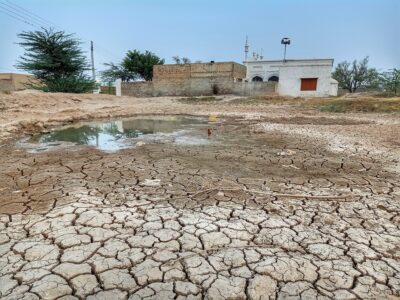The United States Corn Belt includes western Indiana, Illinois, Iowa, Missouri, eastern Nebraska, and eastern Kansas. The region has dominated corn production in the U.S. since the 1850s, accounting for more than a third of the global supply of corn. It is also the world’s largest source of soybeans. New research led by atmospheric scientist Mingfang Ting from Columbia University’s Lamont-Doherty Earth Observatory reveals that climate change has triggered two changes that threaten the region’s crop production; warming temperatures are both increasing the evaporation of soil moisture and causing summer storms to carry more moisture away from the Midwest. Ting’s study, which she presented last week at the meeting of the American Geophysical Union, forecasts a progressive worsening of this one-two punch over the next decade.

Traditionally the Corn Belt receives most of its rainfall during the summer, which is also the growing season for corn. However, Ting identified a net loss of surface water here, indicating evaporation from the soil and plants is exceeding the net rainfall during those months. She and colleagues took a closer look.
“We didn’t understand why precipitation is decreasing in this specific region, and the models are very robust, showing that, yes, in the future it’s going to decrease. So, we looked into it. And what we find is puzzling. We were thinking this must be circulation-driven or [a result of the] thermodynamics changing… Turns out it’s the storm pattern itself.”
Ting and colleagues found the storms in the Corn Belt during the summer are becoming weaker and dropping less precipitation. This weakening is a product of global warming as well. Temperature differences between the polar and midlatitude regions trigger storm intensity. With the polar regions warming faster, there is less of a temperature contrast, thus weakening the storms.
The storms are getting weaker, but they will actually move more moisture out of the region, causing further drying. This was an unexpected finding, said Ting.
Typically when storms are weaker, they are less efficient at moving moisture out of the region. But future modeling shows this is not the case. Due to global warming, the atmosphere holds more moisture. This triggers a greater moisture difference to build up between the Central Plains and the polar regions, “so the storms are trying harder to remove the moisture from the region,” explained Ting, “to smooth out the gradient.” The models show more moisture being transported to northern high latitudes, including into northern reaches of the currently drier Great Plains.
Ting’s models indicate the trend only intensifies in the future under climate change.
“Our results suggest that in the future, the US Midwest corn belt will experience more hydrological stress,” said Ting.




They shout give more information about the study, like frecuency, rain schedule. Congratulations for share!
What other regions of the world will grow corn and soy crops in next 5-10 years? What about Russia and China?
Are crops in Australia failing as well? Grain crops across NSW and Victoria?
I farm in Minnesota. Has this guy noticed the ridiculous amounts of moisture and cold temperatures we’ve had in the Midwest the last few years?